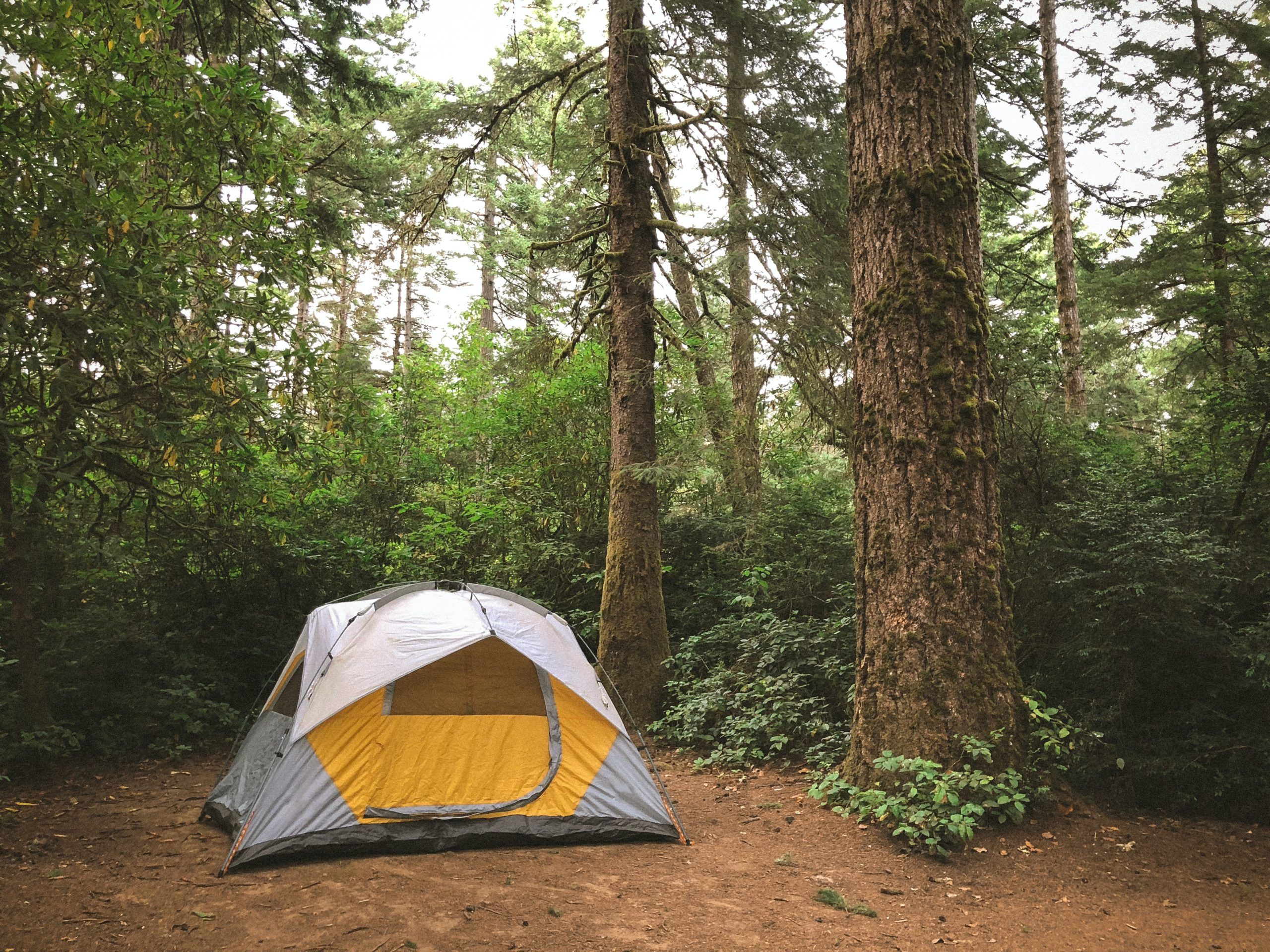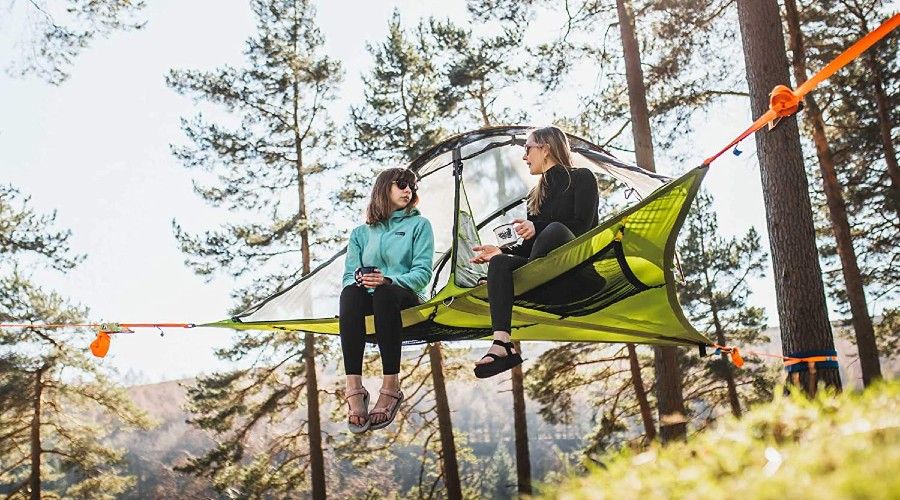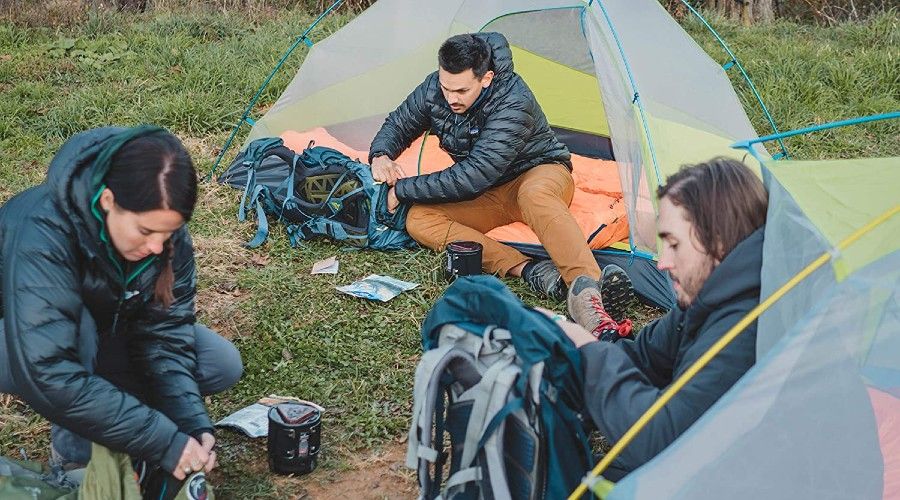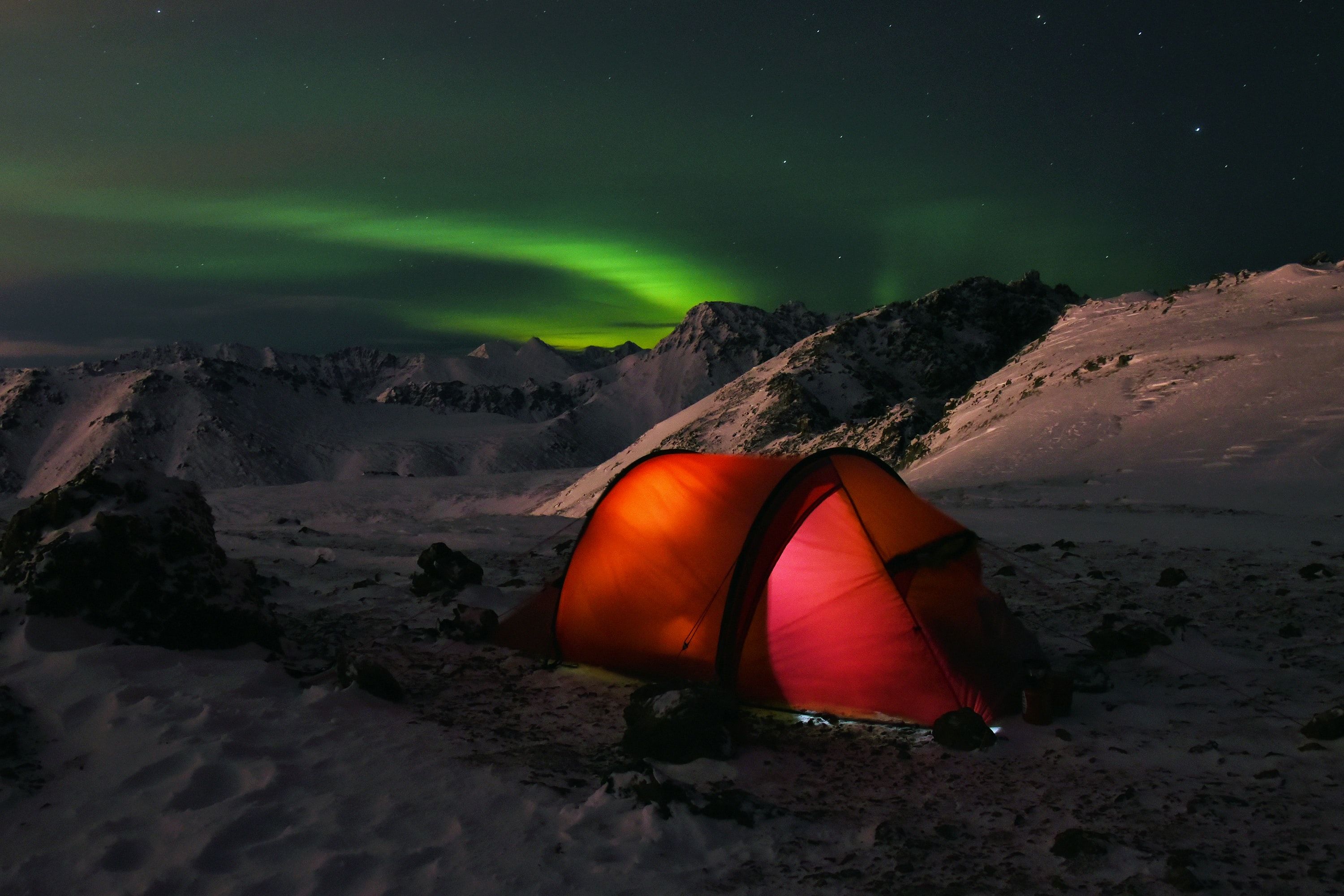If you are in the market for a new camping tent, then you know that a quick search can turn up endless results. Whether you’re searching for the perfect family tent, a lightweight tent for backpacking, or an instant tent for easy set-up, there are many great options available. So, how do you find the best tent for camping?
In this guide, I will show you different factors to consider when choosing a tent. They include the size, key details that impact your tent’s ability to hold up in bad weather, the benefits of a spacious vestibule, and more. In addition to helping you carefully assess the tent options available, I will also share the top 5 tents according to the Backyard Boss team.
The Backyard Boss Top Tents for Camping in 2021
|
PRODUCT |
FEATURES |
||
|---|---|---|---|
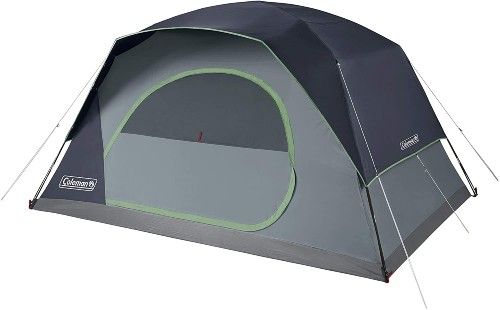
|
|
||
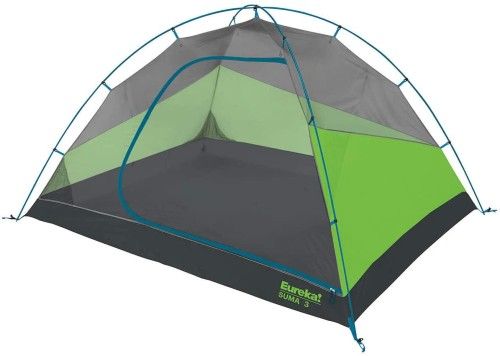
|
|
||
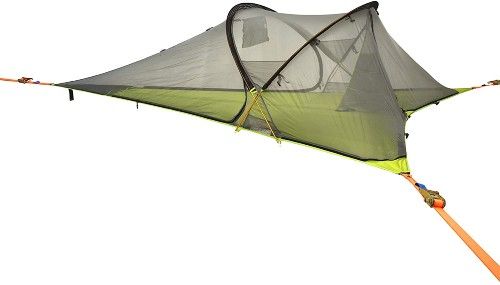
|
|
||
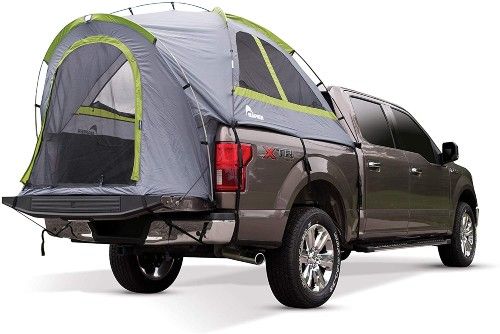
|
|
||
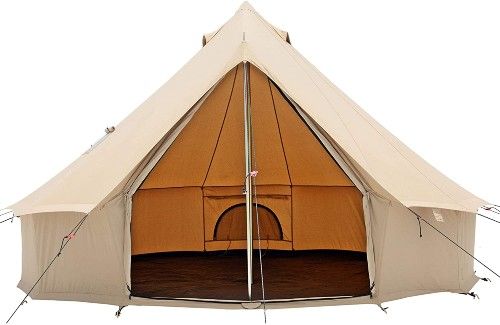
|
|
Why You Can Trust Us
I grew up in an outdoor-loving family, camping every summer since I was a young baby. It instilled a love of camping and outdoor travel that I have carried into my adult life. My husband and I are adventurers, spending much of our time exploring the world around us. Last year alone, we had ten separate camping trips booked to get out and enjoy the great outdoors with our dogs by our side.
During our many adventures, we have had the opportunity to try a wide variety of different tents, including those we quickly loved and many that fell short of our expectations. We have tented during stormy weather, survived hot, humid summers, and even tackled winter camping in the great white north.
In this guide, I combined my many experiences with the opinions of the Backyard Boss team and a wealth of research to help you feel confident when shopping for your next tent.
Best Tent for Families
A spacious and comfortable tent by the well-known brand Coleman, this is the perfect solution for couples or families.
- Quick Pitch with pre-attached poles for fast set-up
- 20% more headroom than traditional dome tents
- WeatherTec weather protection system
- Larger size is too bulky for backpacking
- Significant screening around the tent makes it unsuitable for colder temperatures
|
|
Why We Like It: The Coleman Skydome tent provides plenty of space for you and your whole family, while the modern design provides you with 20% more headroom than a traditional dome tent.
If the 8-person tent is too large, this one is also available in 2, 4, and 6-person sizes, ensuring that there is an option for everyone. The 8-person size is large enough to comfortably fit two queen-size air mattresses side by side or a queen-size air mattress with two single air mattresses along with luggage. The door is extra wide to make it easier to move gear in and out of the tent, while mesh storage pockets and a gear loft help you to keep your gear organized.
The tent’s poles are pre-attached with a quick pitch design, allowing you to set it up in under 5 minutes. The upper portion of the tent under the rainfly is all mesh, allowing for optimal airflow in the warmer months, while the rain fly protects your family from the elements. It is equipped with Coleman’s WeatherTec system to keep you and your family safe and dry regardless of the weather. The tub-like floor design and inverted seams help to keep water out. The frame of the tent has been designed to stand strong in up to 35 mph winds.
Who Should Buy It: If you are looking for a roomy and comfortable tent that is easy to set up and capable of keeping your family safe from the elements, the Coleman Skydome is a great option.
Best Tent for Backpacking
Lightweight and quick to set-up, this is the perfect tent for backpackers and hikers while they are on the move.
- Lightest backpacking tent Eureka has made at 4.8lbs
- Gear loft and three storage pockets
- Full-cover rainfly for protection from the elements
- Only available in 2 and 3 person sizes
- Significant screening around the tent makes it unsuitable for colder temperatures
|
|
Why We Like It: When packing for backcountry travel, space and weight are key factors in selecting the right gear. Eureka's tent weighs only 4.8 pounds, which makes it the lightest backpacking tent that the company has ever manufactured.
The two-pole structure of the tent is supported by aluminum poles without adding unnecessary weight. It has been designed to be quick and easy to set up, freeing your time to explore your destination when you settle in. It is available as both a 2-person tent and a 3-person tent.
The minimalist design doesn’t rob you of storage options with a gear loft, 3 storage pockets, and a vestibule space under the full-cover rainfly. A significant portion of the tent beneath the rainfly is made of mesh, adding significant ventilation and airflow. It also provides a full view of the sky above if the rainfly is removed when the weather permits. It all packs up in a convenient compact bag, making it easy to carry when you’re on the move once again.
Who Should Buy It: Backpackers and backcountry lovers that are searching for a lightweight and reliable tent for their outdoor adventures should consider the Eureka! Suma Backpacking Tent.
Best Suspended Tree Tent
Suspending your sleeping area off the ground, this tree tent provides comfort and protection from the elements.
- Anti-roll strap system
- Suspended design means no concerns with unlevel ground
- Suitable for use year-round
- May not be accessible for those with mobility issues
- Only available in 2-person sizing
- Requires the presence of suitable trees or the purchase of a ground conversion kit
|
|
Why We Like It: Combining the comfort of a hammock with the protection offered by a tent, the Tentsile Connect 2-Person Tree Tent offers a unique camping experience.
It is designed to be suspended by trees at three separate points, creating a secure and reliable sleeping space. It is marketed as a 2-person tent, but with a maximum weight rating of 880lbs, it can be used by 2 adults and a small child. It is held securely in place with the use of heavy-duty ratchet buckles for added strength and security. If you prefer to have the tent set up on the ground, you can buy a ground conversion kit.
The tent is constructed with anodized aluminum alloy poles and 240D nylon-polyester composite, allowing for a lightweight design without compromising strength and durability. It features full coverage insect netting and a removable rainfly that extends to not only keep you dry in the tent but also to protect the ground directly below for your gear. Weighing 20.7 pounds total, it’s light enough for backpackers and outdoor adventurers to carry with ease.
Who Should Buy It: The Tentsile Connect 2-Person Tree Tent is a great choice for outdoor travelers that prefer the experience of sleeping in a hammock.
Best Truck Tent
Leveraging the structure of your pickup truck, this tent offers ultimate comfort and weather protection.
- Color-coded pole and sleeve assembly for easy set-up
- Full rainfly with additional storm flaps for weather protection
- Elevated design means no concerns with unlevel ground
- May not be accessible for those with mobility issues
- Only available in 1 size, based on the size of your truck bed
- Requires the presence of your truck, limiting use to vehicle accessible sites
|
|
Why We Like It: The Napier Backroadz Truck Tent is constructed of lightweight, breathable taffeta with 2 large mesh windows to allow for significant airflow on hot summer days.
Should the weather take a turn, a full rainfly and additional storm flaps keep the try safe and dry. A tent floor protects you from any dirt or grime in the truck bed. It includes a gear loft, gear pocket, and lantern holder to make it easier to keep your sleeping space organized.
Designed to assemble securely in the bed of your truck, the tent leverages the structure of the truck bed for added strength and security while making the most of the available interior area. A color-coded system makes the pole and sleeve assembly easy, even for first-time campers. The tent is available in 5 different sizes depending on the size of your truck bed, ranging from a compact short bed to a full-size long bed. When not in use, it packs up in a convenient carry bag, weighing anywhere from 13 to 16lbs, depending on the size of the tent.
Who Should Buy It: With the convenience and reliability of the truck bed set-up, the Napier Backroadz Truck Tent is a great solution for those looking for an easy set-up without worrying about finding level ground.
Best Tent for Hot Tenting
Windproof, waterproof, and equipped with a stove jack opening, this canvas tent is a great choice for any temperature.
- 100% cotton fabric is breathable, waterproof & UV resistant
- Sewn-in heavy-duty groundsheet
- Includes a 5” stove jack with a weather flap
- Higher price point
- Heavy and bulky compared to other tents on the list
|
|
Why We Like It: Made from 100% breathable cotton canvas, the White Duck Regatta Canvas Bell Tent can provide reliable protection against the elements 365 days of the year.
The army duck canvas is UV resistant and fire retardant, with a long lifespan when properly cared for. The weightless WR treatment used to seal the canvas against rain and snow provides exceptional waterproofing power without compromising the breathability of the material. Airflow is further enhanced by the mesh door, three windows, and 4 roof vents around the exterior of the tent. A 5” wide stove jack opening allows you to use a wood stove for heating in the cold winter months, sealing up with a weather flap when not in use.
The tent includes a sewn-in heavy-duty groundsheet to protect the occupants from the ground below. It provides a comfortable, dry, and clean place for you and your family to spend the night regardless of the weather conditions. It is available in 3 different sizes, including 3, 6, and 8-person. The whole tent is held up by a galvanized door pole and center pole. If you are concerned about portability, the tent is bulkier than most of the other options on this list. For this reason, it is better suited to front-country or car camping experiences.
Who Should Buy It: Campers considering extending their outdoor travel season by camping during the cold winter months can rely upon this tent in combination with a wood stove, for a warm, dry and comfortable hot tent experience.
Important Factors to Consider When Buying a Tent
Image Credit: Tentsile on Amazon
Material
The material used in the construction of your tent will determine its breathability, durability, weight, and weather resistance, among other things. The truth is that there is no one ‘best material’ to choose. Instead, focus on finding the right material for your lifestyle and future travel plans.
Nylon
The most common material used in tents is nylon. This fabric is a favorite because its stretchy nature allows it to distribute stress and pressure over a larger area of the tent, making it stronger and more durable than many of the other lightweight fabric options. It is, however, susceptible to damage from UV exposure. For this reason, nylon tents often have to be replaced more frequently. Nylon absorbs water. However, you can address this concern by applying a protective coating.
Polyester
Less durable and tear-resistant than nylon, tent manufacturers are often forced to use thicker polyester to achieve the same strength as a comparable nylon tent which adds weight. However, newer blends of polyester are stronger than those used previously. Polyester absorbs far less water than nylon which allows it to hold up better during wet weather. The biggest reason for choosing polyester is that it stands up better to UV damage.
Canvas
The most traditional of the materials used for tents, canvas, and cotton is more durable than the man-made tent fabrics commonly used in modern tents. They have a much longer lifespan if cared for properly. However, they also come at a much higher price point. Canvas tents are better insulated than nylon or polyester, making them a favorite choice for winter camping.
Capacity
Each tent is given a capacity rating, sharing how many people that they can accommodate. However, you should be aware that those capacity ratings refer to how many sleeping pads will fit in the space. There is no consideration to the comfort of those using the sleeping pads or the gear that you may be bringing with you.
When choosing a tent, think about how many people will be inside and the room you need for comfort. It means purchasing different tents for different travel scenarios.
For example, when my husband and I are car camping, we enjoy using a larger queen-sized mattress for added comfort. We also camp with 2 large dogs that need their own space in the tent with us. For this reason, we prefer using an 8-person tent. However, we don’t lug all of that along for backpacking or paddle in campsites. For those situations, we are more comfortable snuggling up in a tighter space.
Headroom
One factor often overlooked when first purchasing a tent is the headroom that it offers. Having more headroom isn’t important to everyone. However, it is for those who are taller or struggle with back pain, finding it difficult to crouch down in a shorter space.
The different shapes and sizes of tents available mean there is a wide variety of options also in terms of ceiling height. Dome tents are taller directly in the center, getting shorter the further you move to the sides of the tent. Cabin-style tents are boxier in shape, providing higher headroom throughout the whole tent. However, they are often more challenging to set up and aren’t as reliable when faced with heavy winds and storms.
If you are setting up for a relaxed car camping vacation, the ability to stand up in your tent when moving around or getting dressed in the morning can have a big impact on your comfort level!
Number & Size of Doors
If you have a larger number of people staying in a tent, find a tent with more than one door to make it easier with everyone coming and going. Larger doors also make it easier to move luggage in and out.
That being said, this is a matter of personal opinion and comfort versus a determining factor on if a tent will functionally work for you and your family. If you find a tent that has everything else you need but only one door, you can make it work.
Protection Against the Elements
We can’t always predict inclement weather, but many tents have incorporated weatherproofing techniques to help to keep you and your family comfortable and dry. Understanding the weatherproofing features each tent offers will help you choosing a tent best suited for the weather.
While basic tents can generally withstand light rain without leaking, they aren’t always suited for more significant storms. Tents set up to withstand more serious storms will have full rain covers, sealed and reinforced seams, and tent flooring that’s durable and keeps any water pooling under the tent from coming through. Some tents will go as far as extending the heavy-duty fabric used on the tent floor partway up the sides of the tent for a tub-like effect for additional protection.
Another important weather-related factor to consider is your tent’s ability to stay standing in heavy winds. Dome tents are designed to withstand winds better than cabin-style tents. However, not all dome-style tents are created equally. Fiberglass poles add weight to your tent when transporting it, but they are stronger and better suited to heavy wind than aluminum tent poles.
At the same time, they are also more fragile and break easier. If you know that you are setting up in a high wind area, consider a tent with a low profile, closer to the ground. It will help to cut back on the level of wind resistance and always stake down your tent with all provided guylines.
Ventilation
If you have ever spent a night in a hot and stuffy tent with no airflow, you already understand the importance of ventilation. Not only does it help to improve the air quality in the warmer months, but also helps to avoid unnecessary condensation throughout the winter.
Many 3-season tents include plenty of mesh along the sides of the tent under the rainfly. However, when tents are designed for 4-season use, there is often less mesh in the tent body to retain any heat within the tent. On these tents, vents are usually located near the top of the tent.
Ease of Set-Up
One of the most stressful moments for most campers is the process of setting up and tearing down. Whether this is your first time setting up a tent and you are looking for a beginner-friendly option, or you’ve been camping for years and are simply seeking to simplify the process, the ease of set-up is an important consideration.
Many modern tents are designed to be quick and easy to set up, even if you’re tackling the process alone. They do this using pre-attached poles, simple structure designs, color-coded poles and sleeves, buckle clips, and easy-to-follow directions.
If you know that you are going to be tackling the set-up process solo, you want to seek out a tent that will make this possible. Large and elaborate tents are a great option if you can set them up without too much unnecessary stress. Be honest with yourself and choose a tent that you can handle comfortably so that you can move past the set-up and enjoy the rest of your trip.
Gear Storage Options
A tent is only one of the items on most camping basics checklists. Therefore, it’s important to have space in your tent to store your gear during your trip. Most tents come with mesh storage pockets and gear lofts inside of the tent for smaller gear. They include lanterns and flashlights as well as items like car keys and wallets. For the larger items and luggage, you will need to choose a tent that is big enough to accommodate you and your luggage inside. You can also find a tent that offers a vestibule or awning to keep your gear safe and dry.
Packed Size & Weight
The last factor to consider is the size and weight of your tent when it’s fully packed up for transport. The importance of this point will depend on your style of camping. Backpackers and backcountry lovers need a tent that packs up as small as possible so that it can be carried easily during travels. If you are car camping, however, you have more flexibility with the weight of your tent. If it fits comfortably in your vehicle with the rest of your gear, you are ready for your next trip.
Understanding Tent Season Ratings
Image Credit: Eureka! on Amazon
Each tent is rated for the season that it is designed to accommodate comfortably. It isn’t to say that you can’t use it outside of the recommended period. However, it may not be the most comfortable experience. The season rating assigned to your tent is based on its ability to provide proper ventilation in the warmer months, as well as the insulation necessary for the colder winter months.
The most common type of tent is the 3-season tent. These are designed to use from the spring to the fall, protecting you from rain, wind, insects, and UV rays. Tents designed with a little more protection but still aren’t fully suited for the harsh cold of winter are considered 3-4 seasons. These are preferred for the early spring and late fall periods.
Finally, 4-season tents offer all the insulation and protection necessary to be used 365 days/year, including during inclement weather. Not only do they keep you warm when the temperatures drop, but they are also designed to withstand the weight of a heavy snowfall.
Should You Consider Hot Tenting or Cold Tenting when Winter Camping?
Image Credits: Paxson Woelber on Unsplash
Are you considering camping during the colder winter months? There is a unique peace and silence that comes with the arrival of freshly fallen snow. But, for those interested in tents at this time of year, there are also additional important considerations for your trip if you plan on staying warm, cozy, and comfortable. It includes deciding whether hot tenting or cold tenting is the right approach for your next cold-weather adventure.
Hot tenting refers to camping in a tent with some form of heat source to maintain comfortable temperatures. The most common form of hot tenting is a small woodstove in a canvas tent with a built-in stove jack. Regardless of how cold the temperatures may be outside, you and your gear will remain warm and dry inside. It is important to pay careful attention to ventilation for these trips as the heating source can cause moisture and condensation to form inside the tent.
The other option for winter camping is cold camping. It is the use of a standard winter tent where the only source of heat is the body heat of the people that you are camping with. You may be surprised to learn that your tent can heat up quite a bit just based on body heat if you keep it sealed up properly!
It is best to choose a tent that is just big enough to accommodate anyone camping in their sleeping bags with no additional room as this cuts down on the amount of air in the tent that must remain warm. The benefit of cold camping is that there is less gear to pack. However, it can be harder to convince yourself to get out of your warm sleeping bag in the morning.
How We Picked
With so many different tents available, where do you start? I looked at a wide variety of brands and styles, exploring the options and how they would fit into various camping and outdoor travel situations. The first step was to identify the different camping scenarios that we wanted to focus on, followed by sorting the tents that we were considering based on the situation that they are designed to excel in.
From there, I looked at specific features and details about the tents in question, including durability, ease of set-up, extra space, outdoor gear storage options, and weatherproofing features. I also read through the reviews from previous customers to better understand the experiences of others and how they may complement or contradict my own experiences and the experiences of the Backyard Boss team. That helped me narrowing the list down until I could identify the five tents that stood out above all others.
The 2021 Best Tent for Camping Is...
Choosing the right tent for you and your family will depend heavily on your travel plans. The tents included in this guide are each incredible in their way. However, one tent stood out for its versatility. If you are looking for a reliable tent for you and your family in most common camping situations, the Coleman 8-Person Skydome is a great solution. With so many different sizes available, it can accommodate everyone from solo travelers to larger family groups.
If you are a first-time camper, be prepared to explore the options available as you discover your camping style. You may discover through experience that you prefer a larger tent or a tent that uses a specific set-up system. It is why there are so many different tents on the market. There is no right answer, so trust your gut and find what works best for you and your family.

